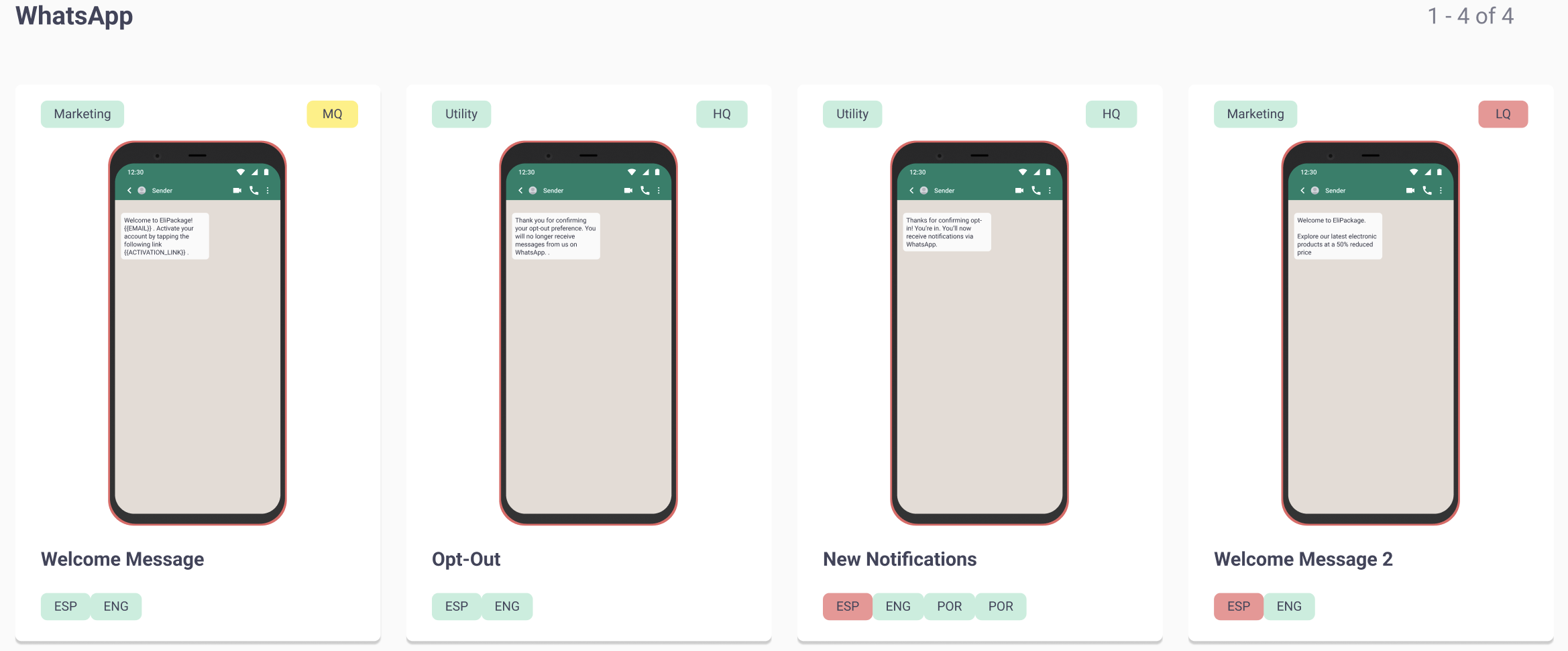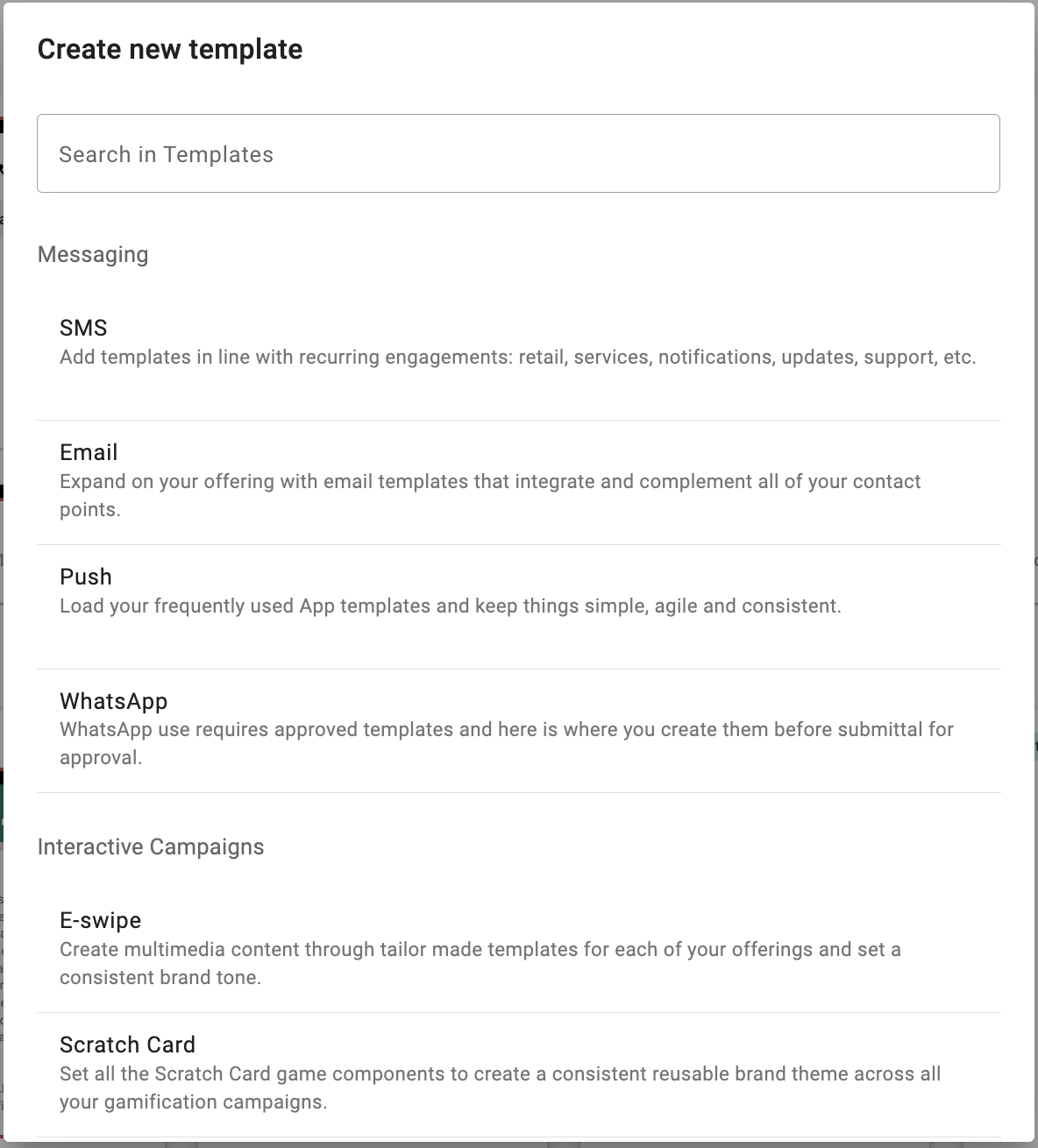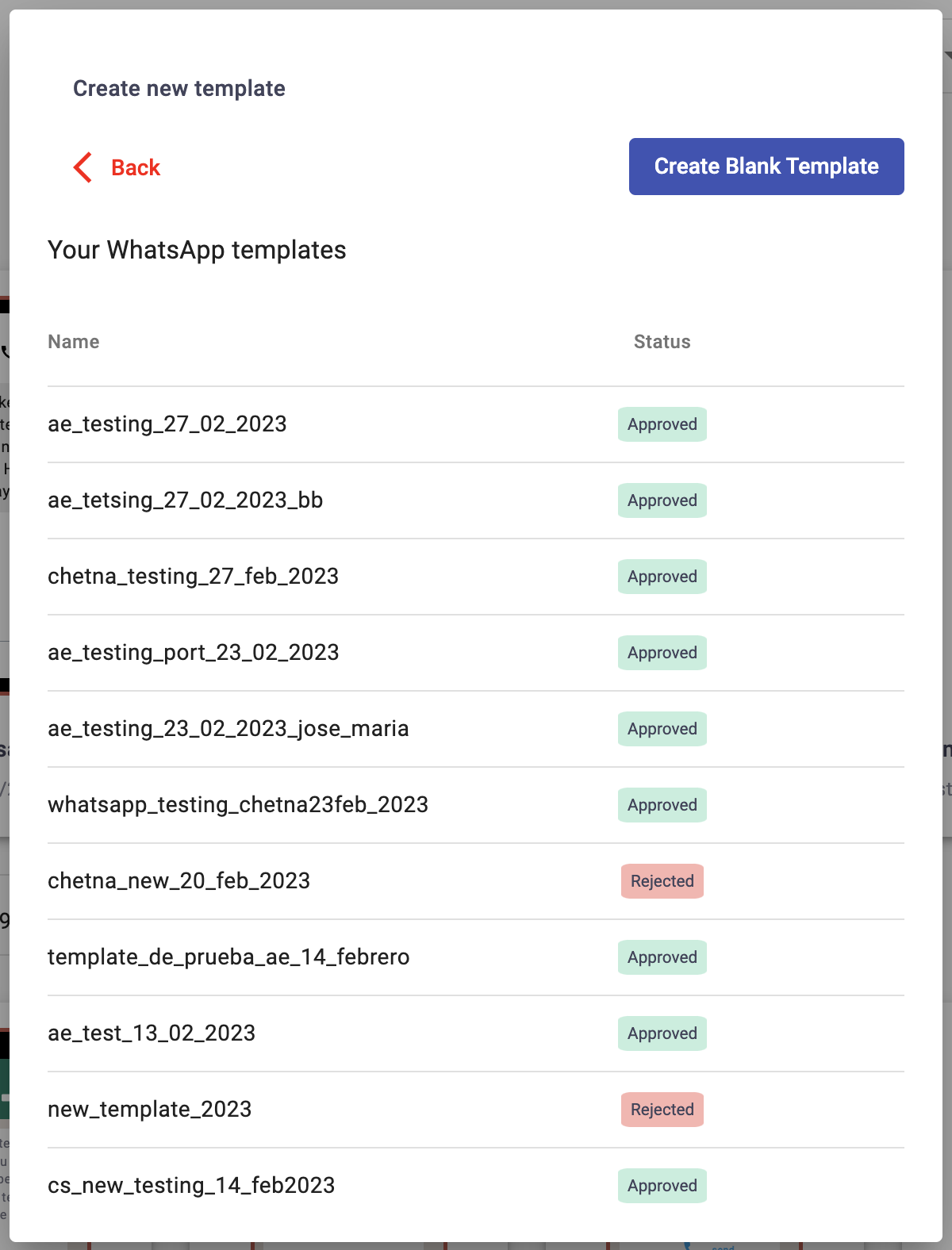WhatsApp Templates
Templates are used in template messages to open marketing, utility, and authentication conversations with customers. Unlike free-form messages, template messages are the only type of message that can be sent to customers who have yet to message you, or who have not sent you a message in the last 24 hours.
Templates must be approved before they can be sent in template messages. In addition, templates may be disabled automatically based on customer feedback and engagement. Once disabled, a template cannot be sent in a template message until its quality rating has improved or it no longer violates our business or commerce policies.
When creating a WhatsApp message template, users can choose from three distinct template types, each designed for a specific use case and subject to different policies and delivery rules:
-
Marketing: Marketing templates are used for promotional content, such as product announcements, special offers, newsletters, or personalized recommendations.
Common use cases include:
- Flash sales or discount notifications
- Product launches or back-in-stock alerts
- Event invitations or personalized promotions
-
Utility: Utility templates are intended for transactional or informational updates that relate to an ongoing interaction with the user. These templates must be strictly non-promotional and provide expected or requested updates.
Common use cases include:
- Order confirmations or shipping updates
- Appointment reminders or payment alerts
- Account updates or ticket status notifications
-
Authentication: Authentication templates are designed to verify a user’s identity during login or account access processes. These templates typically include a one-time passcode (OTP) and are subject to stricter formatting requirements defined by Meta.
Approval ProcessOnce you have created your template you can submit it for approval. It can take up to 48 hours for an approval decision to be made by META.
If your message template is approved, it's status will be set to Active - Quality pending and you can begin sending it to customers. If it is rejected, you can edit it and resubmit for approval.
Unlike the other channels available in the platform, where your creativity can run loose as to how to create your templates, for the case of WhatsApp, there are guidelines that have been created by META, that must be followed to ensure a smooth and continuous operation of you WhatsApp account.
As these guidelines evolve with time, expanding the capabilities offered into areas that were previously restricted, a thorough understanding of the dos and don’ts of the use of your WhatsApp account as one of the tools of your business communication portfolio is a must. Keep updated on WhatsApp Business Policy and WhatsApp Commerce Policy in detail by clicking here.
WhatsApp started with a single type of template used for transactional exchanges which were focused in addressing customer service issues. In this new release, we have included all the categories supported by WhatsApp.
As before, there are some basic but important rules that must be followed.
User consent. Opt-in needs to be explicit, via a defined process that clearly states the purpose of the communications that will be delivered. On the flip side, opting out needs to be just as clearly stated. The goal is to make the process for the users as transparent as possible.
Obtain an opt-in for each different category of messages that you will send (E.g., order updates, relevant offers, product recommendations, etc.)
The underlying reason that WhatsApp is seeking, is to ensure that all exchanges with customers fulfill three basic elements and need to be,
- Expected. As customers have opted in to receive information from your business over WhatsApp, they will not be not surprised when they receive your messages.
- Relevant. Personalized messages to a specific person based on recent engagement with the business, pertinent and concise, with necessary information, and outline clearly, the steps needed to be taken.
- Timely: Messages are received when they are relevant.
Keep in mind that as you create templates, all of them will be vetted for compliance with Metaverse policies and undergo an approval process. Any changes will require the same approval process before it can be used.

Before you begin
You must
WhatsApp Template StatusOnce the WhatsApp has been created, META will assign a quality status to the WhatsApp template, to know more about these status we recommend you go to the WhatsApp Template Quality Status section.
Creating a WhatsApp Message Template
The steps to create a WhatsApp template are the following:
- Select +New Template, located at the top of the Templates section.
- In the popup window that follows, select the WhatsApp option.

- The platform will display another popup with a list of previously existing templates along with their status (Approved, Rejected, Pending). You can start from a blank template.

If you select Create Blank Template you will be defining every aspect of the template. In either case, you will be taken to the Create a new WhatsApp template section, where you will have to configure all parameters of the template, for the Blank template case.
The template creation section consists of two steps
- Metadata: This section allows users to set the metadata for a WhatsApp template, including selecting the category (Authentication, Marketing, or Utility), assigning a template name, and choosing the languages for the message template.
- Personalize: This section allows users to customize the WhatsApp message template by adding a header, body text, footer, and optional buttons. Users can input the message content for each language selected, add variables for dynamic text, and preview the message appearance on both iPhone and Android devices.

Updated 4 months ago
